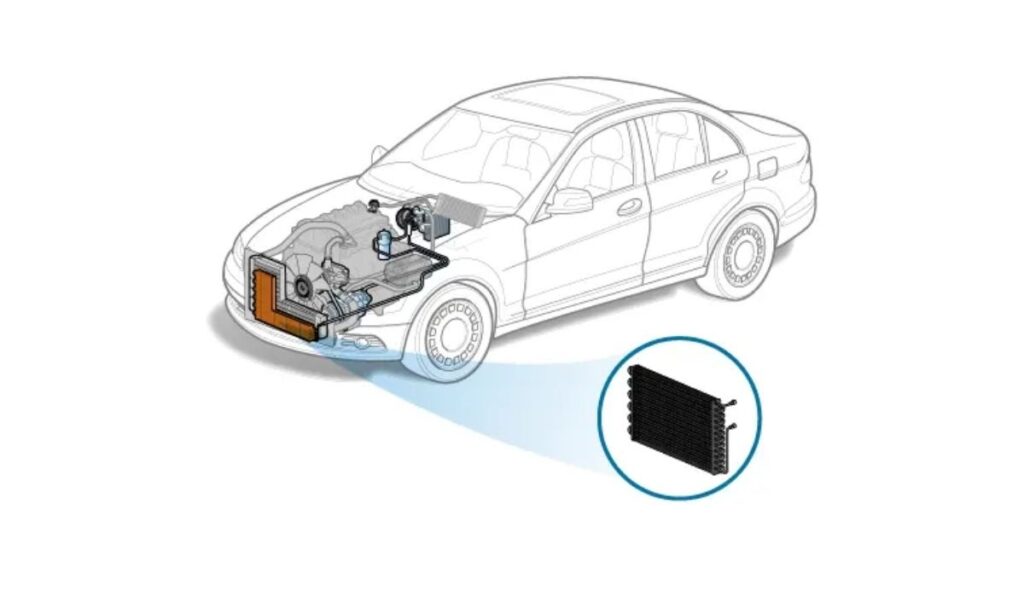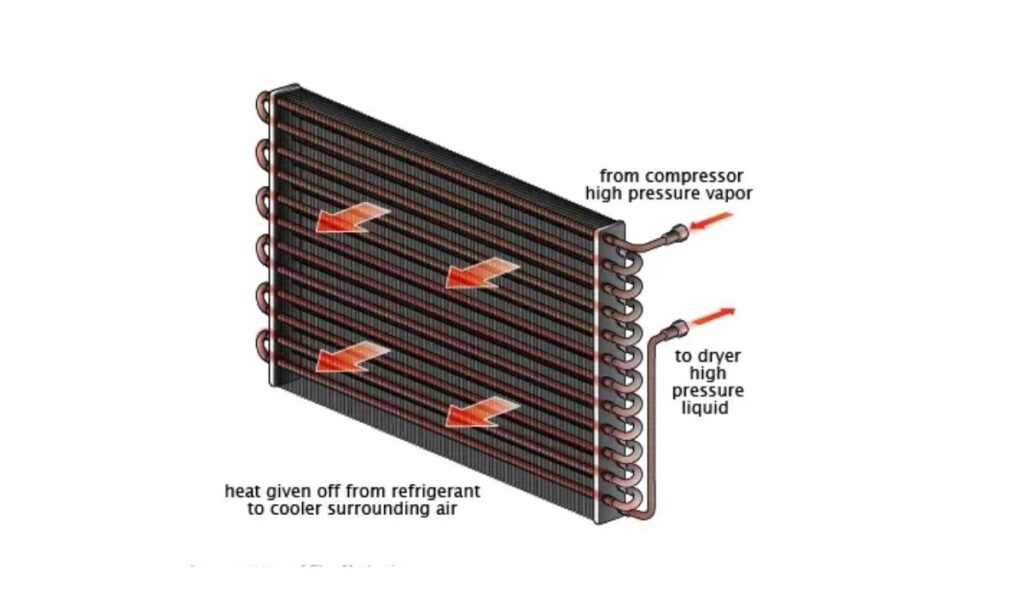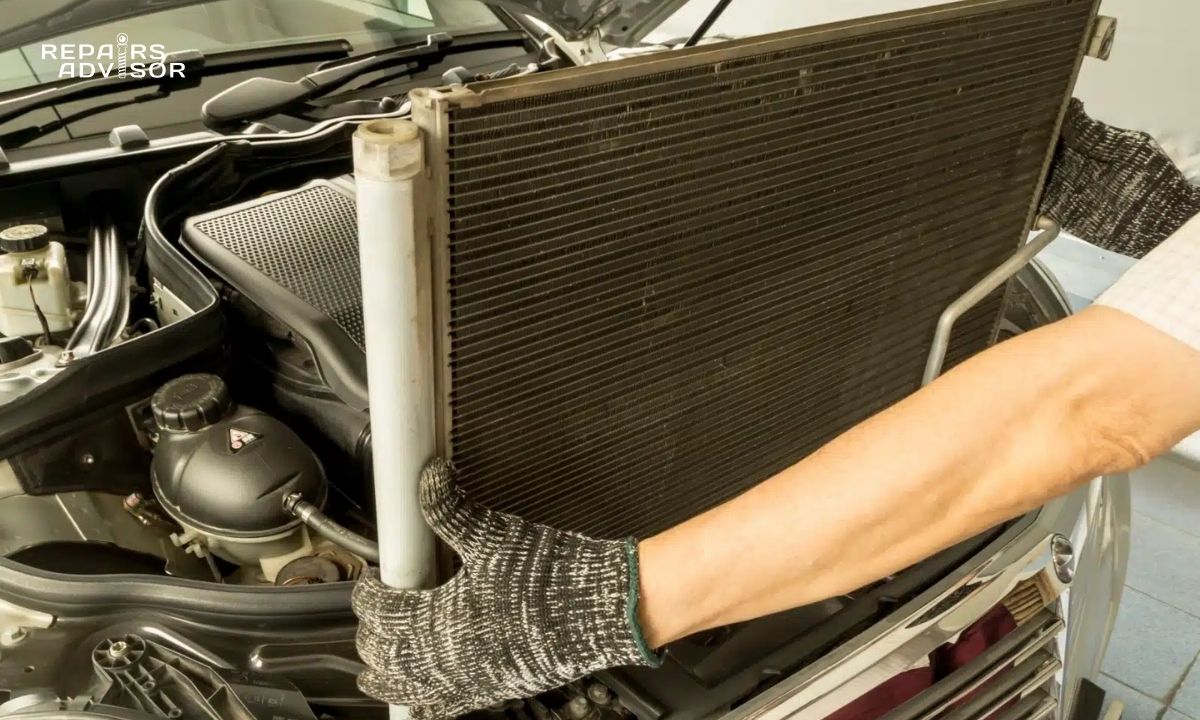Ever wondered how your car’s A/C manages to transform hot, muggy air into a delightful cool breeze? A big part of that magic happens thanks to the air conditioning (A/C) condenser. Think of it as your A/C system’s very own radiator! Just like your engine radiator cools coolant, the condenser’s job is to shed heat from the A/C’s refrigerant.
This unsung hero is typically a series of tubes and fins, usually sitting right at the front of your vehicle, nestled behind the grille. As you drive, cool air rushes across its surface, carrying away the heat from the hot, high-pressure refrigerant flowing inside. This cooling process causes the gaseous refrigerant to gradually transform back into a liquid state, ready for its next round of cooling.
But when this crucial component malfunctions, your A/C system can quickly lose its “cool” factor!

Key Signs Your Air Conditioning Condenser Is Failing
When a condenser goes bad, it’s usually due to either a leak or a clog. These issues often lead to frustrating symptoms:
- A/C Doesn’t Cool Properly (or Not at All):
- This is the most obvious and annoying sign. Since the condenser is responsible for removing heat from the refrigerant, a problem with it means the refrigerant won’t cool down enough. The result? Your A/C system just can’t get cold, or at best, it only blows cool, not truly cold, air. It’s like trying to cool a room with a broken fan!
- Icy Spots or Frost on the Condenser:
- If you peek behind your grille and notice frost or icy patches forming on parts of the condenser, that’s a red flag! This typically indicates that the condenser is restricted or clogged internally. When refrigerant can’t flow freely, it can cause localized temperature drops severe enough for ice to form.
- Visible Refrigerant Leaks:
- Condensers can develop refrigerant leaks over time, either from age, corrosion, or physical damage (like a rock hitting it through the grille). While refrigerant itself is colorless and odorless, the refrigerant oil that mixes with it can sometimes leave a greasy residue or stain on or around the condenser. A professional A/C tech can use a UV dye and light to pinpoint these otherwise invisible leaks.
- Warning Lights or Blinking A/C Button:
- Some modern vehicles are smart enough to detect issues with the A/C system’s performance or pressure. If a problem is found with the condenser (or related components), your car might flash the A/C button on the dashboard or illuminate a specific warning light to alert you.
- Improper A/C System Pressure (Diagnosed by a Mechanic):
- This is a diagnostic clue a technician looks for. If the condenser is restricted or clogged, it prevents the refrigerant from flowing and cooling properly. This will typically cause a significant increase in the A/C compressor discharge pressure (the high-side pressure), which a mechanic can detect using a set of specialized pressure gauges. High pressure can put immense strain on your compressor, potentially leading to its failure too!
How Your A/C Condenser Works Its Magic (The Cooling Cycle):
To really appreciate the condenser’s role, remember one simple rule: heat always moves to a cooler state whenever possible. Your A/C system uses this principle to pull heat from your car’s cabin and transfer it to the outside air. Here’s a quick trip through the cooling cycle:
- Evaporator Core: Liquid refrigerant enters the evaporator core inside your dashboard. Here, it “boils” and expands, rapidly pulling heat from the surrounding cabin air. A blower motor pushes warm cabin air over the evaporator’s fins, transferring that heat directly to the refrigerant.
- Compressor: The now gaseous refrigerant leaves the evaporator and heads to the compressor. The compressor then pressurizes this gas and significantly increases its temperature.
- Condenser (The Cooling Star!): The hot, high-pressure gaseous refrigerant now enters the condenser at the front of your car. As your car moves, cool ambient air blows through the condenser’s fins (or an auxiliary fan kicks on when idling). This airflow removes the heat from the super-hot refrigerant, causing it to cool down and condense back into a liquid state.
- Receiver-Drier/Accumulator: On the final leg, the now liquid refrigerant passes through either a receiver-drier or accumulator (depending on your car’s system) to remove any remaining moisture and impurities. Then, it’s ready to repeat the entire process, continuously cooling your cabin!
How to Address a Failing A/C Condenser
When a condenser goes bad, its failure can ripple through your entire A/C system. Replacing it is the necessary fix, and it’s definitely a job best left to the pros.
- Professional Diagnosis & Replacement is Key:
- A defective condenser must be replaced. This isn’t a DIY job, as professional equipment is absolutely required to safely evacuate all the old refrigerant (which is harmful to the environment if released) and then recharge the A/C system correctly with the precise amount of new refrigerant after the replacement. Improper handling can cause serious injury or damage to the environment.
- Access Challenges and Additional Replacements:
- Depending on your vehicle’s design, accessing the condenser might mean temporarily removing other components like the grille, front bumper, or even the radiator.
- Pro Tip (and industry standard!): Most professionals strongly recommend replacing the accumulator or receiver-drier at the same time as the condenser (or any major A/C component like the compressor). Why? Because once the A/C system is “opened up” to the outside air during service, the moisture-absorbing material in the accumulator/receiver-drier becomes saturated and ineffective. Replacing it ensures your system stays clean and dry, preventing future problems!

Your Repair Advisor’s Take:
Your Air Conditioning Condenser is a vital component, tirelessly working to shed heat and keep your cabin frosty. When it starts to fail, your comfort quickly dwindles, and ignoring symptoms can lead to more costly damage to other A/C parts, especially your compressor. Due to the high pressures and specialized equipment involved, A/C repairs are truly best left to the experts.
Don’t let a struggling A/C system leave you sweating! A problem with the condenser often means your A/C system is compromised.
For accurate diagnosis, safe handling of refrigerants, and a lasting repair, always consult a qualified automotive A/C technician. They have the right tools, knowledge, and experience to get your A/C system performing flawlessly again. Get ready for truly cold air – schedule a professional A/C system diagnostic today!
